Saberr CoachBot
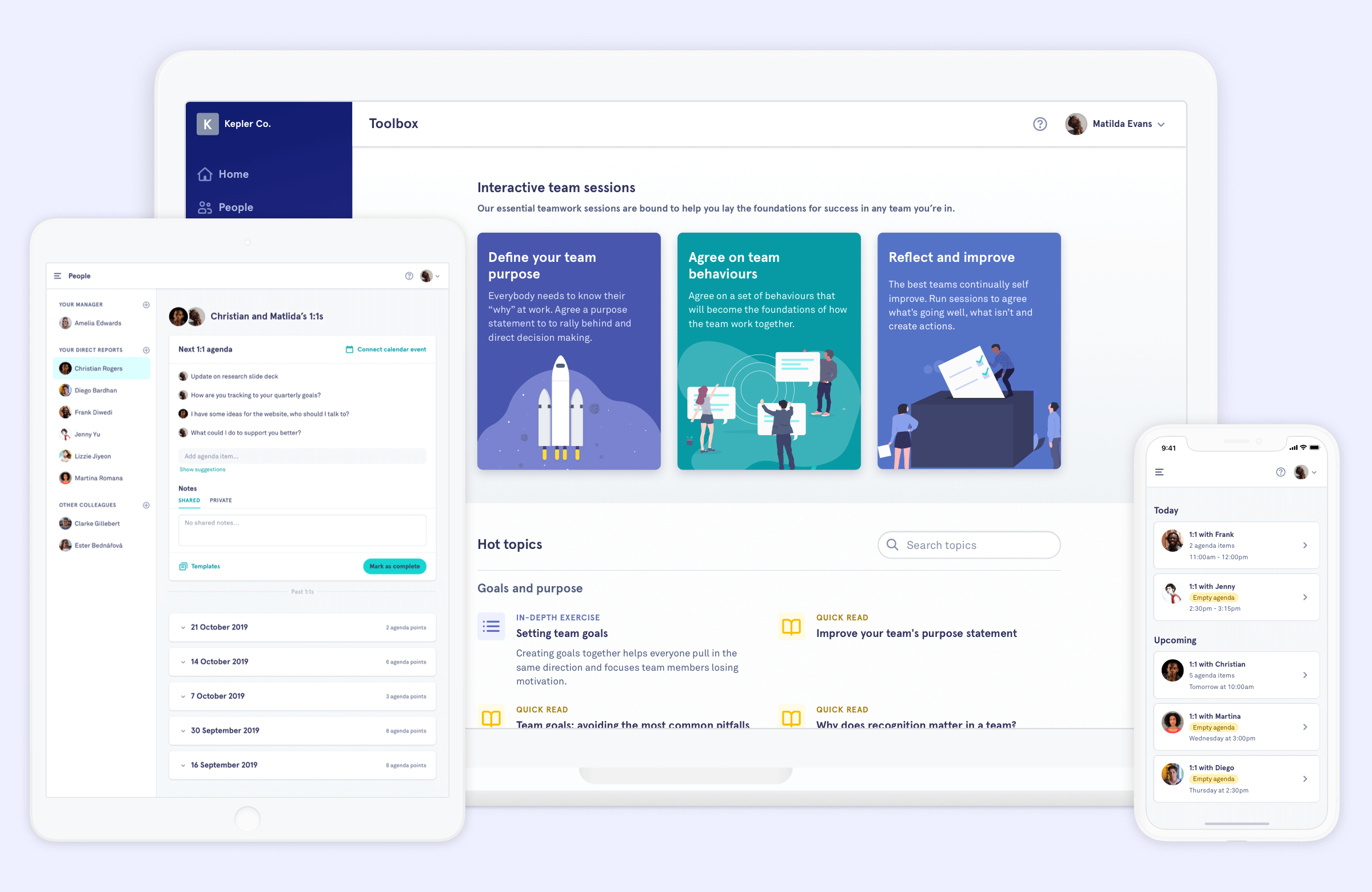
Product Designer
Saberr is a team of 8 so it's highly collaborative. The product team was myself as Product Designer, 3 developers and a lead UX designer for half the project and a consulting Product Manager.
2017 - present
Saberr was founded on the vision of a world where every team is performing at the top of their game. Their first product, Base, was designed to help companies build teams and hire based on an understanding of culture and values. By measuring their employee's values and personality it accurately predicts how well a team would work together, pretty neat.
The problem was, customers were using it on their existing teams...and they were scoring badly, with no guidance on how to improve. If you've ever tried running an employee engagement survey you know what that's like.
Our goal is to help companies create high-performing and engaged teams.
The world's first digital team coach
Team coaching is nothing new. But it has its flaws. It's expensive, usually reserved for executive teams only, and reblockquoteuires the presence of a coach to make things stick. When I joined the team this what the vision for how to fill the gaps Base highlighted. 'CoachBot, the world's first digital team coach.' Sounded promising.
The team had worked closely with the world's top team coaching experts and reviewed over 100 years of academic research into teams.
High-performing teams needed three things:
- A clear and compelling purpose
- Agreed behaviours
- Clear goals
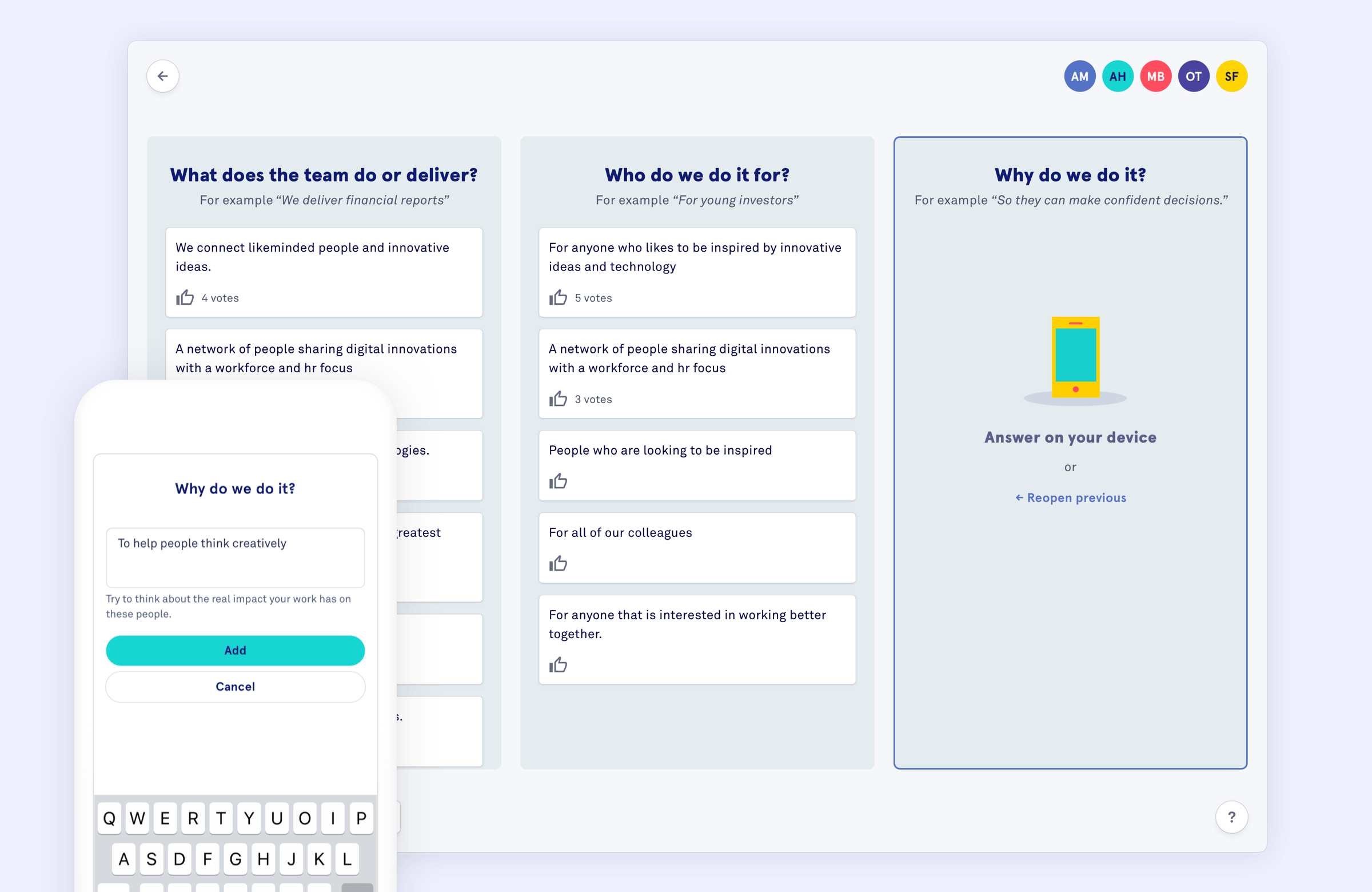
So we started there. Creating a set of self-facilitated sessions that any team could run — in the same room or remotely — to help define those things. They'd be logged on a digital 'Team Canvas' for all to see to maintain accountability.
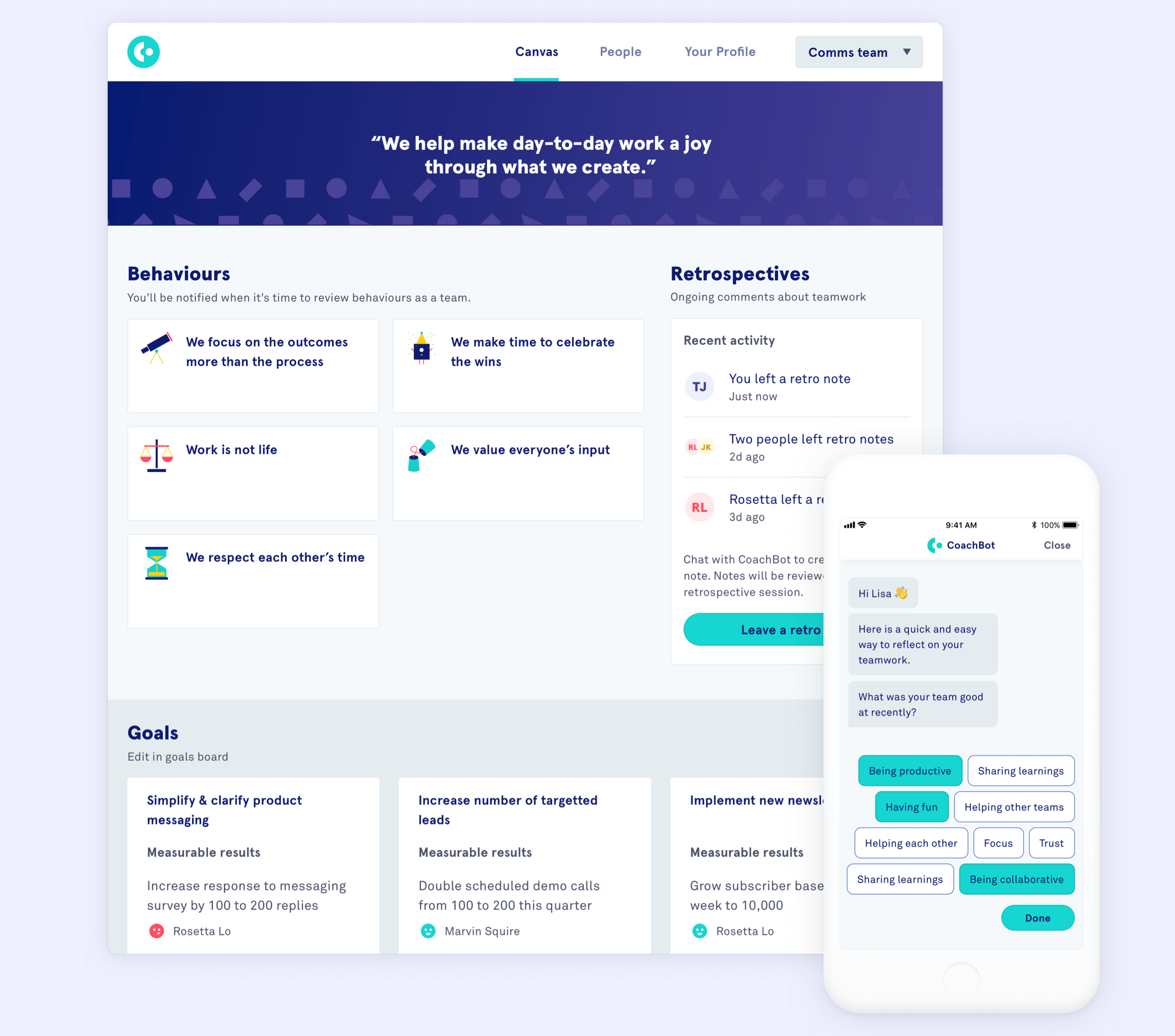
Mixed results
The good news. Teams that used the product for as little as 1.5 hours per month in 6 months saw an average increase of:
- +22% team performancee
- +12% employee engagement
- +12% employee engagement
The less-good was that:
- Sales and usage were low.
- Buyer's didn't get it as it didn't fit neatly in the worlds of leadership development or performance management.
- We didn't clearly deliver value to a specific person, we were talking in 'teams'.
- 90 minute team sessions were a pretty high barrier to entry.
- No clear development journey.
Narrowing in on the manager
Once we hit on the idea, it seemed obvious. Managers. They're the glue of any team and a critical link between company goals and what work gets done. We've probably all had a bad one, and possibly even left a company because of one. But in many small to medium enterprises (SMEs) most end up in the role without the skills of how to manage people and have to learn by doing.
We'd built something without considering the value delivered to a person and the problems it helped them solve.
Design Sprints
We wanted to quickly see if we could create value for managers and solve the problems with our existing product. Running design sprints allowed us to come up with a redesigned product with the same core features but aimed at managers.
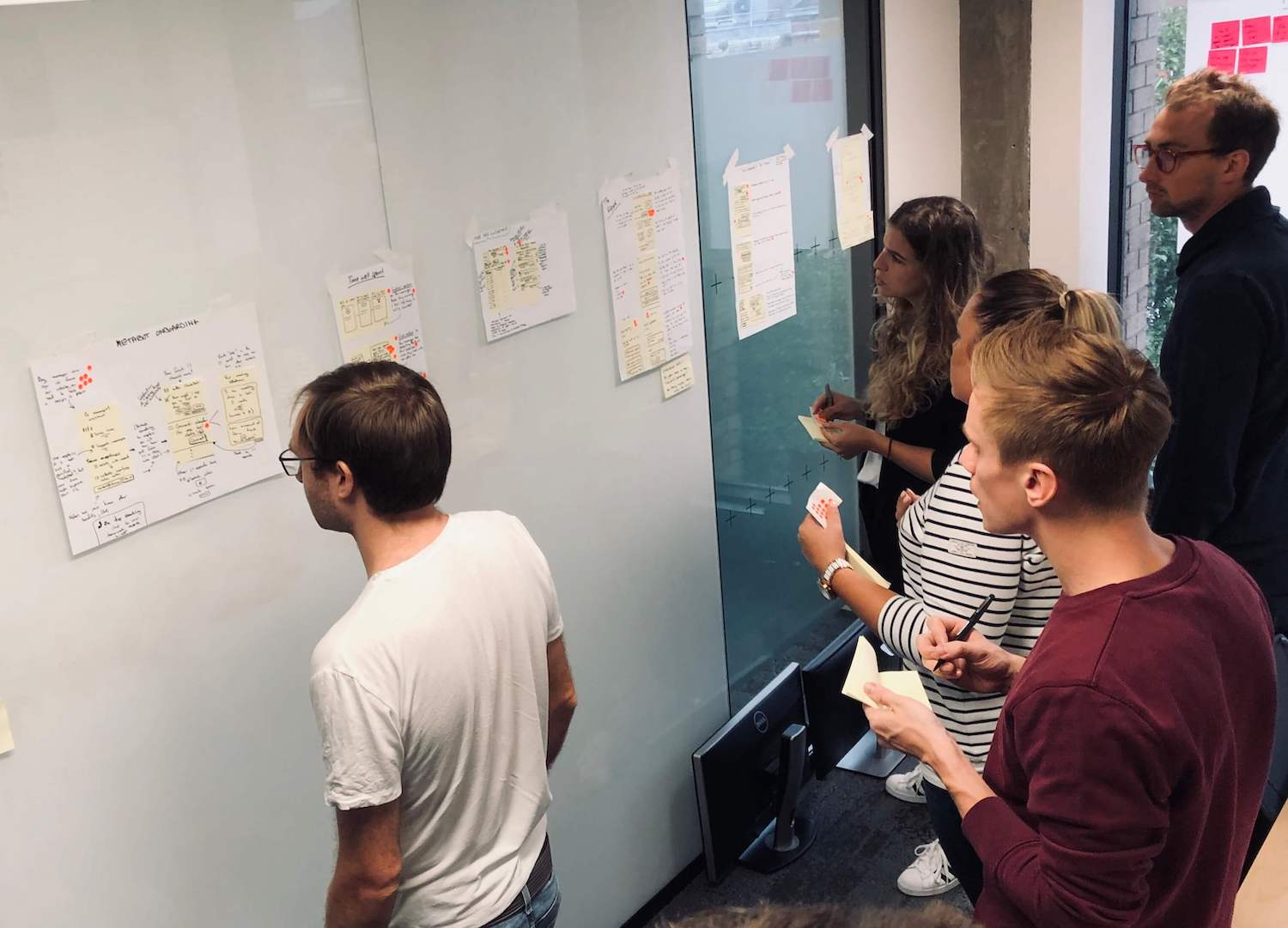
The redesigned product for managers showed promise. We had added a feature that aimed to help create structure in their 1:1s with shared agendas and template. Interestingly most managers were keen to start off by improving their 1:1s over any of the other previous product features.
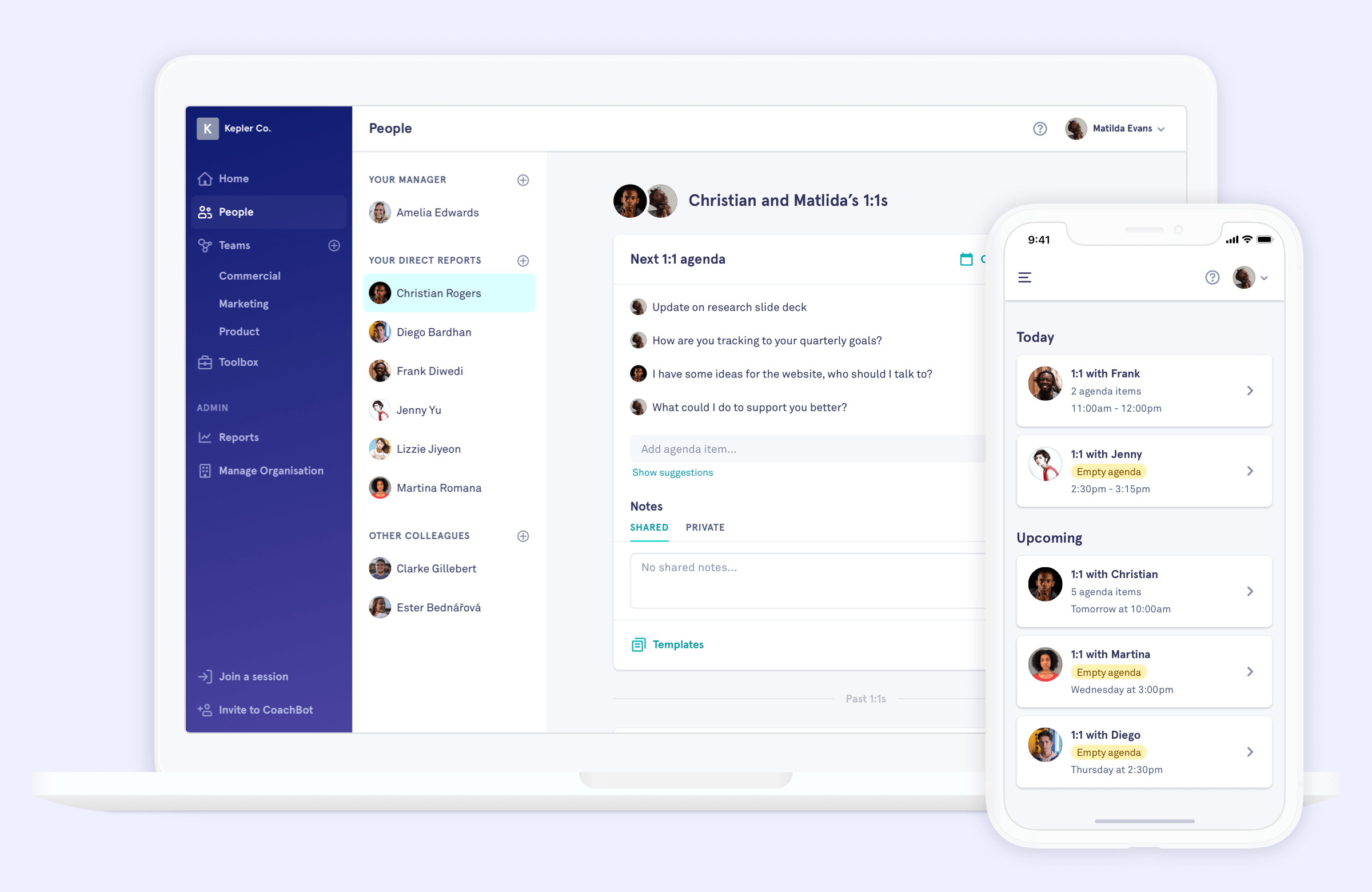
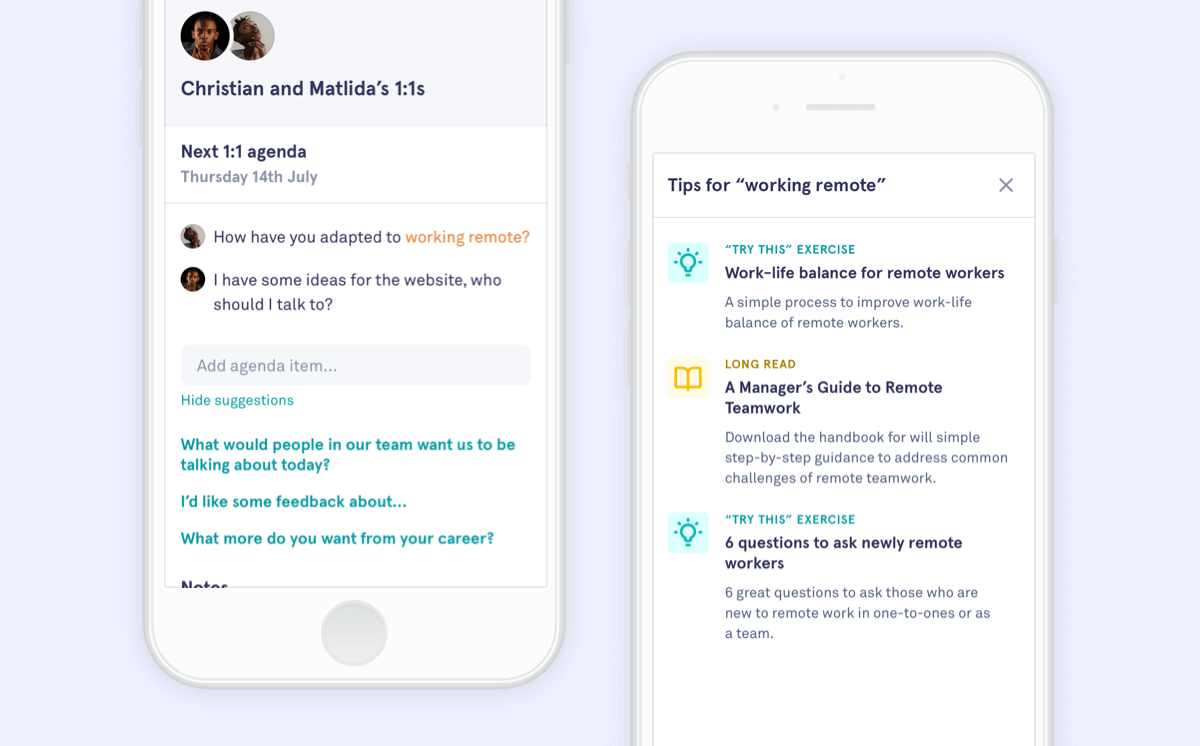
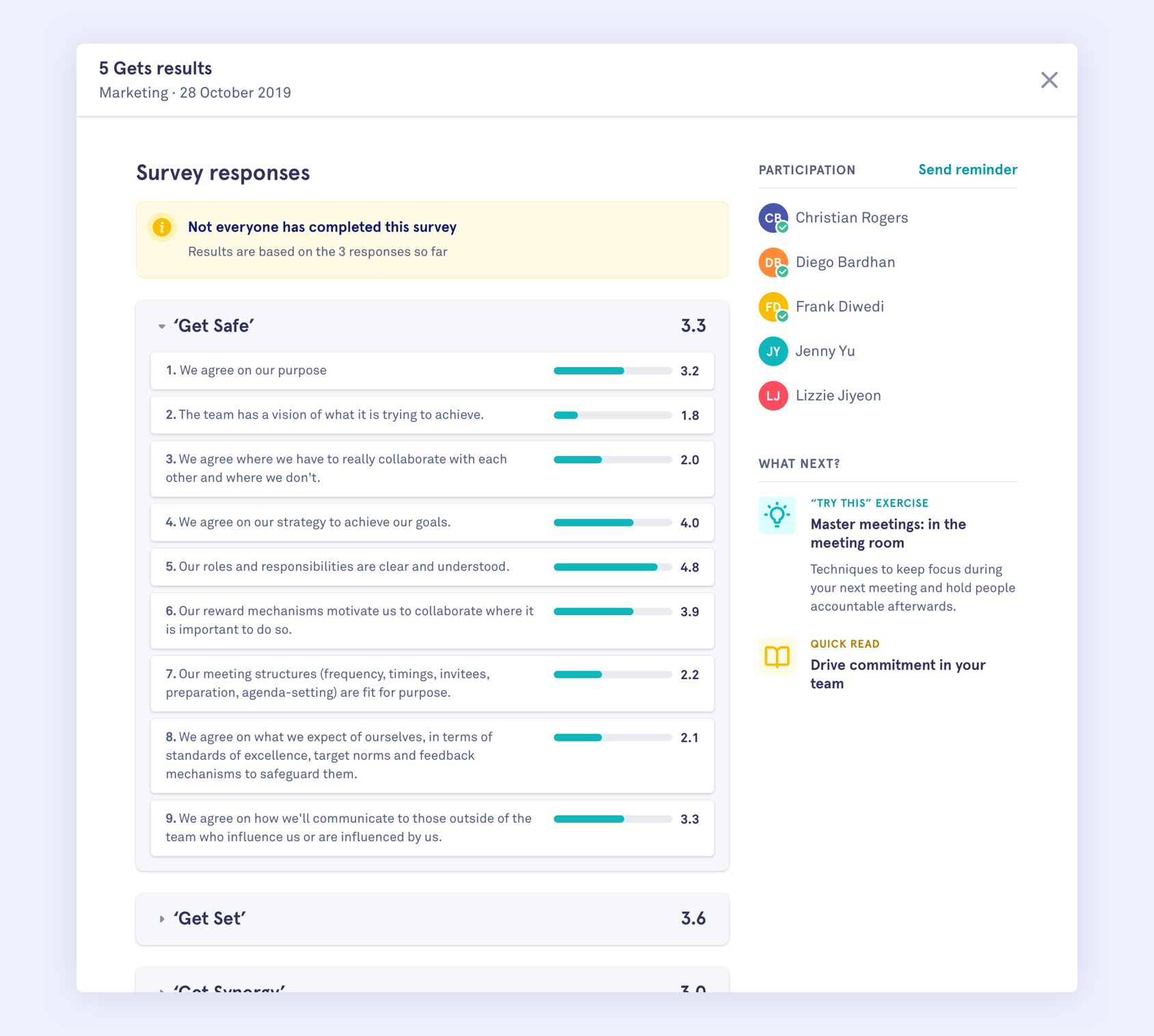
Helping managers apply good people management through their meetings would become core to the product.
Running lean
We still had plenty of assumptions that needed checking with this new product strategy. To help, we adopted Lean Canvas. It's been a great way for us to document our current knowledge and spot assumptions at the core of our business that need testing.
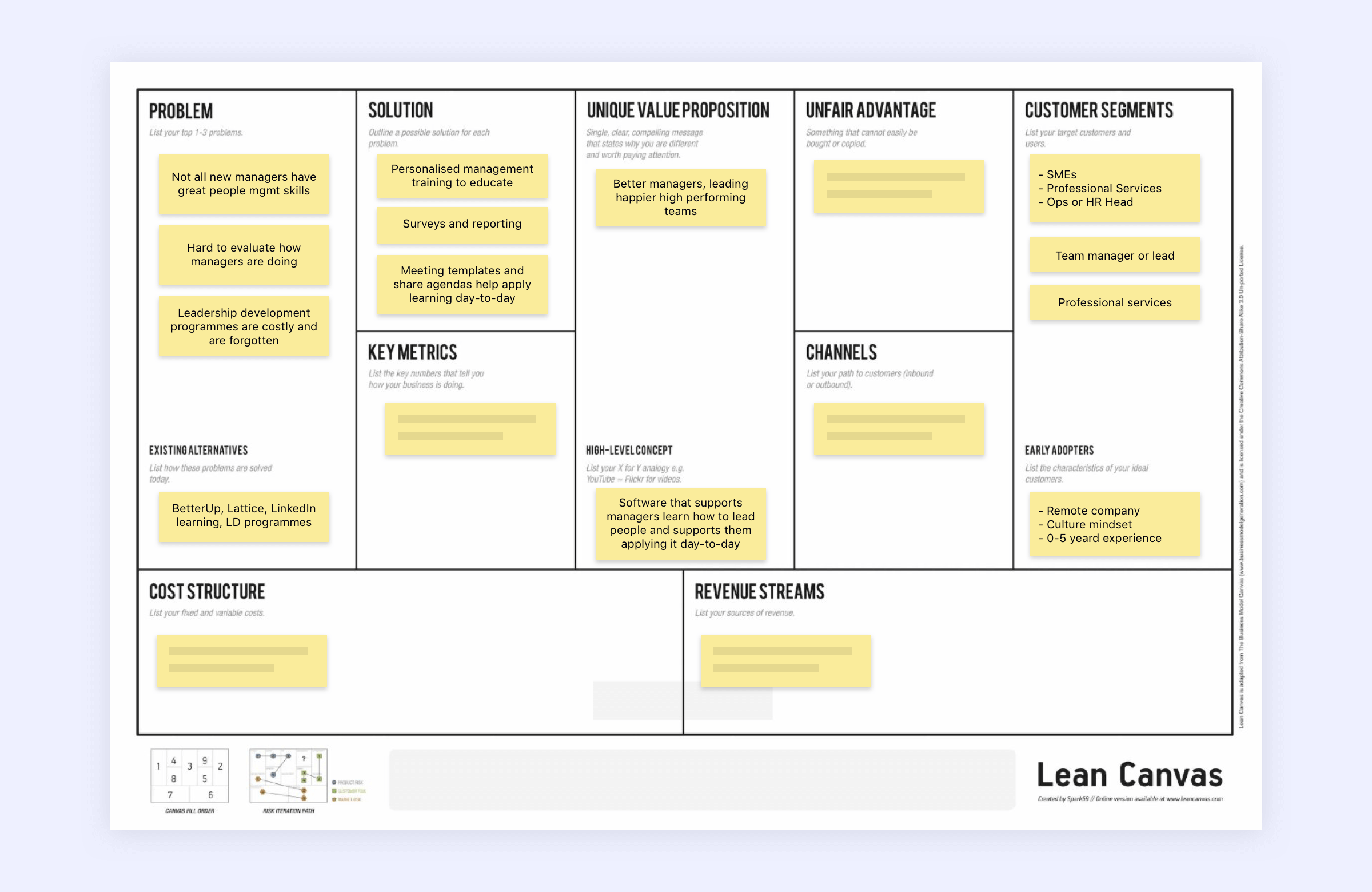
Seeing our assumptions in one place kept us aligned on what we needed to test next.
We used problem and solution interviews with managers and buyers to help us unbundle our assumptions and identify:
- Our target customer and user
- Their top problems
- The value we promise to deliver
- The right solution

A personalised management coach
Good managers are key to happy and engaged teams. Our goal is to educate new managers on the essentials of leading people and support them applying it day-to-day.
Our next step is to help solve the problem a lot of new managers face — a lack of training. Managers start by answering questions to help us understand their situation and motivations. They get a bitesized, personalised training
programme
to help grasp the essentials. In the moment suggestions and meeting templates help them live these skills in the flow of work.
Learn more about how we think CoachBot can help.
What I've learnt
Working on a product yet to find product market fit under the constant pressures of a startup has been tough. Always asking why, encouraging others to consider what we're building and for whom. Rather than how to sell what we have in that environment has been hard. But it's taught me a lot.
- Focus on the outcomes. We got swept up in 'featureitis' and spent a few months working on a dashboard to show insights and usage for admins. It looks great, is used about once a month, and could probably be replaced with a PDF in an email.
- The importance of prioritisation. As a designer it's easy to spend time pixel perfecting designs when that time might be more valuable running an experiment to test an assumption.
- Getting started is often better than being right. Working B2B getting in front of customers is a challenge. Sometimes it's better to act on what you think to be true, log your assumptions in order to get started, and test them quickly.
